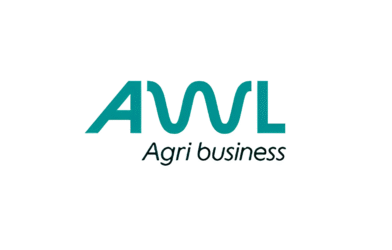Bengaluru, September 2025 — Celebrity-backed fashion and lifestyle brand WROGN, co-created by Indian cricket star Virat Kohli, reported a sharp rise in its losses for the financial year 2024-25. According to regulatory filings, the company’s net loss surged 32% year-on-year to ₹76 crore, compared to ₹57.5 crore in FY24.
Despite enjoying strong brand recall and celebrity endorsement, the company’s growing losses raise questions about profitability in India’s highly competitive fashion and lifestyle market.
Revenue Growth Overshadowed by Rising Losses
While WROGN recorded revenue growth in FY25, it was not enough to offset its rising expenses. Analysts note that the brand continues to invest heavily in marketing, endorsements, distribution, and technology upgrades, which are eating into its margins.
The surge in losses is seen as part of a broader challenge faced by many fashion startups in India: balancing rapid growth and visibility with the need for sustainable financial performance.
WROGN: A Brand Built on Celebrity Power
Launched in 2014 under the Universal Sportsbiz Pvt Ltd (USPL) umbrella, WROGN is positioned as a youth-centric casual fashion brand. With Virat Kohli as its co-creator and face, the brand has built strong visibility across online platforms, exclusive brand outlets, and partnerships with leading retailers like Myntra and Flipkart.
Over the years, WROGN has expanded its product portfolio beyond casual wear into athleisure, accessories, and lifestyle merchandise. Its core proposition remains affordable yet aspirational fashion for India’s growing millennial and Gen-Z population.
Mounting Challenges in the Fashion Industry
The fashion and apparel industry in India has seen explosive growth, but it also remains one of the toughest sectors to achieve profitability. High customer acquisition costs, intense competition from both homegrown startups and global fast-fashion giants, and constantly shifting consumer preferences make scaling profitably a daunting task.
For WROGN, rising marketing spends and operational costs appear to have outpaced revenue growth. Additionally, the discount-heavy e-commerce environment has made it difficult for fashion brands to maintain healthy margins.
Celebrity Endorsement: A Double-Edged Sword
WROGN’s association with Virat Kohli has been both its biggest strength and a financial burden. While Kohli’s massive fan following has given the brand instant visibility, sustained celebrity-led marketing campaigns come with heavy costs.
Industry experts note that while celebrity endorsements build awareness quickly, they don’t necessarily guarantee long-term customer loyalty or profitability. In fact, consumers today are increasingly looking for sustainability, quality, and affordability, rather than just star power.
Comparison with Peers
WROGN is not alone in grappling with rising losses. Several other Indian fashion startups and D2C (direct-to-consumer) brands have reported similar financial challenges in FY25.
- Bewakoof and The Souled Store, popular among young consumers, are also chasing growth while struggling with profitability.
- Larger players like Myntra, though backed by Flipkart, have also faced questions about long-term sustainability.
- International competitors like Zara, H&M, and Uniqlo continue to dominate urban markets with scale and global supply chains.
In this environment, WROGN’s challenge is to differentiate itself beyond celebrity branding and capture a loyal, recurring customer base.
Strategic Moves to Stem Losses
To address its growing financial burden, WROGN is reportedly exploring several strategic initiatives:
- Omnichannel Expansion: Strengthening offline retail presence to complement its strong online footprint.
- Product Diversification: Entering new categories like sneakers, lifestyle gadgets, and athleisure to broaden revenue streams.
- Cost Optimization: Streamlining operations, renegotiating supplier contracts, and reducing dependence on discounts.
- Tech-Enabled Personalization: Leveraging AI-driven tools to better understand customer preferences and improve inventory efficiency.
Such measures could help the company move closer to profitability in the medium term, though execution will be key.
Investors and Market Outlook
WROGN is backed by marquee investors who believe in its long-term potential. However, with rising losses, investors are likely to push for better unit economics and a clear roadmap to profitability.
The Indian fashion market itself remains highly attractive, projected to grow to $115 billion by 2026, driven by rising disposable incomes, urbanization, and online shopping penetration. If WROGN can align its strategy with these macro trends, it has significant headroom for growth.
Virat Kohli’s Enduring Association
For now, Virat Kohli continues to be the face of WROGN, with his personal brand equity lending credibility and aspirational value. However, industry analysts caution that over-reliance on one celebrity could be risky in the long run.
To sustain momentum, WROGN may need to build a stronger identity independent of Kohli, focusing more on product innovation, customer experience, and brand storytelling that resonates with young India.
Conclusion
The 32% surge in WROGN’s FY25 loss to ₹76 crore highlights the challenges of building a profitable fashion brand in India, even with celebrity backing and strong market presence.
While the company’s revenue growth and visibility are encouraging, the mounting losses underline the need for cost discipline, customer retention strategies, and differentiation beyond endorsements.
As competition intensifies and consumers demand more value, WROGN’s ability to adapt will determine whether it can transform from a celebrity-backed fashion label into a sustainable, long-term player in India’s booming lifestyle sector.
Disclaimer: This blog article references and summarizes the information originally published on Inc42. All credit for the primary reporting and statements belongs to the original source. We have curated and presented the content here solely for informational and educational purposes, without claiming ownership of the original reporting.





